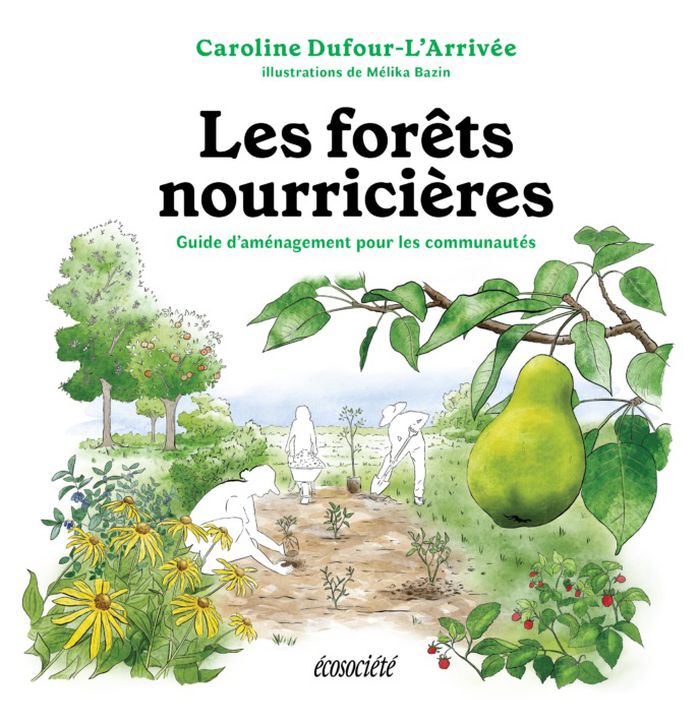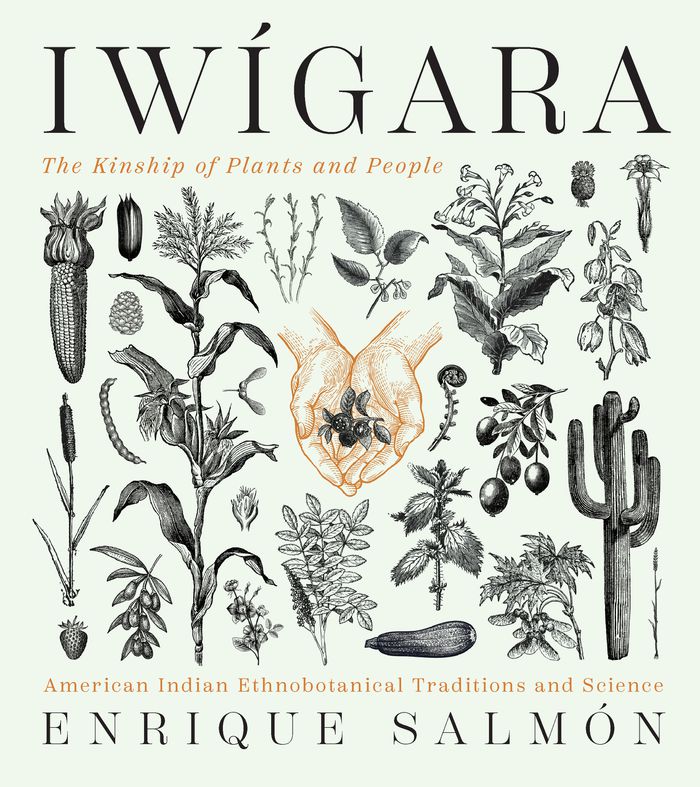$34.95
(available in store)
Summary:
We spray them, pluck them, and bury them under mulch; and we curse their resilience when they spring back into place. To most of us, weeds are a nuisance, not worth the dirt they are growing in. But the fact is weeds are a plant just like any other, and it is only we who designate them as a weed or not, as a plant we will dote over or one we will tear out of the earth(...)
Weeds
Actions:
Price:
$34.95
(available in store)
Summary:
We spray them, pluck them, and bury them under mulch; and we curse their resilience when they spring back into place. To most of us, weeds are a nuisance, not worth the dirt they are growing in. But the fact is weeds are a plant just like any other, and it is only we who designate them as a weed or not, as a plant we will dote over or one we will tear out of the earth with abandon. And as Nina Edwards shows in this history, that designation is constantly changing. Balancing popular history with botanical science, she tells the story of the lowly, but proud, weed. Sprinkled with personal anecdotes and loads of useful information, Weeds sketches history after history of the fashions and attitudes that have shaped our gardens, showing us that it is just as important what we keep out of them as what we put in, and that just because we despise one species does not mean that there haven’t been others whose very lives have depended on it.
Fauna and flora
$35.95
(available in store)
Summary:
Autour de nous, des objets en bois. Futiles. Précieux. De quels arbres ont-ils la fibre, de quelles forêts sont-ils l'essence ? Forêts jardinées ou plantations monospécifiques ? Des cagettes en peuplier, des palettes en pin maritime, des traverses en chêne, du lamellé-collé en hêtre. Des bouchons en liège, des contrebasses, des barriques, du bois-énergie et du carton(...)
Bouts de bois: des objets aux forêts
Actions:
Price:
$35.95
(available in store)
Summary:
Autour de nous, des objets en bois. Futiles. Précieux. De quels arbres ont-ils la fibre, de quelles forêts sont-ils l'essence ? Forêts jardinées ou plantations monospécifiques ? Des cagettes en peuplier, des palettes en pin maritime, des traverses en chêne, du lamellé-collé en hêtre. Des bouchons en liège, des contrebasses, des barriques, du bois-énergie et du carton ondulé. Ce récit sensible trace son chemin par-delà les procédés industriels et les pratiques de la sylviculture en interrogeant notre rapport intime à l'arbre et à nos espaces forestiers. De la région du Grand-Est aux Landes de Gascogne en passant par la forêt de Bercé, le Morvan et la Sologne, nous parcourons des massifs dont les essences, arrivées là nullement par hasard, servent à l'industrie du bois. Ici, des savoir-faire vertueux s'opposent à des logiques du tout-jetable. Cet essai libre et multiforme, à la fois érudit, poétique et illustré - agrémenté de cartes géographiques réelles ou imaginaires, de croquis aquarellés et de photographies de compositions végétales -, nous invite à nous saisir d'un matériau modeste et populaire, à voir en lui l'arbre qu'il a été, et puis à faire un peu de science, un peu d'histoire, pas mal d'écologie et quelques pas de côté.
$26.95
(available in store)
Summary:
Seaweed is so familiar, and yet we know so little about it. Even its names-- pepper dulse, sea lettuce, bladderwrack-- are mystifying. In this exquisitely illustrated portrait, poet and artist Miek Zwamborn shares discoveries of seaweed's history, culture, and science. We encounter its medicinal and gastronomic properties and long history of human use, from the Neolithic(...)
Seaweed: An enchanting miscellany
Actions:
Price:
$26.95
(available in store)
Summary:
Seaweed is so familiar, and yet we know so little about it. Even its names-- pepper dulse, sea lettuce, bladderwrack-- are mystifying. In this exquisitely illustrated portrait, poet and artist Miek Zwamborn shares discoveries of seaweed's history, culture, and science. We encounter its medicinal and gastronomic properties and long history of human use, from the Neolithic people of the Orkney islands to sushi artisans in modern Japan. We find seaweed troubling Columbus on his voyages across the Atlantic and intriguing Humboldt in the Sargasso Sea. We follow its inspiration for artists from Hokusai to Matisse, its collection by Victorians as pressed specimens in books, its adoption into fashion and dance, and its potential for combating climate change, as a sustainable food source and a means of reducing methane emissions in cattle. And, of course, we learn how to eat seaweed, through a fabulous series of recipes based around these "truffles of the seas."
$17.95
(available in store)
Summary:
Voyageuse passionnée par le monde végétal, Katia Astafieff nous raconte onze incroyables aventures de plantes venues d'ailleurs, comme le tabac, le kiwi, la rhubarbe ou encore l'étrange rafflésie. Onze plantes, mais aussi onze explorateurs partis en expédition au bout du monde au péril de leur vie, des chercheurs d'or vert, des Indiana Jones de la botanique. Laissez-vous(...)
L'Aventure extraordinaire des plantes voyageuses
Actions:
Price:
$17.95
(available in store)
Summary:
Voyageuse passionnée par le monde végétal, Katia Astafieff nous raconte onze incroyables aventures de plantes venues d'ailleurs, comme le tabac, le kiwi, la rhubarbe ou encore l'étrange rafflésie. Onze plantes, mais aussi onze explorateurs partis en expédition au bout du monde au péril de leur vie, des chercheurs d'or vert, des Indiana Jones de la botanique. Laissez-vous guider sur les traces de l'espion britannique Robert Fortune, déguisé en mandarin pour voler le secret du thé aux Chinois, ou de l'excentrique Joseph Rock qui a fait parvenir en Occident quelques graines d'une délicate pivoine inconnue jusqu'alors.
Fauna and flora
Les forêts nourricières
$42.00
(available in store)
Summary:
Dans la recherche de nouveaux aménagements agroécologiques dans les communautés, les forêts nourricières apparaissent comme une alternative porteuse. Dans ce guide qui vise à favoriser et accompagner les projets de cette nature, Caroline Dufour-L’Arrivée explique le concept et son importance, valorise et partage l’expérience acquise par treize initiatives modèles et(...)
Les forêts nourricières
Actions:
Price:
$42.00
(available in store)
Summary:
Dans la recherche de nouveaux aménagements agroécologiques dans les communautés, les forêts nourricières apparaissent comme une alternative porteuse. Dans ce guide qui vise à favoriser et accompagner les projets de cette nature, Caroline Dufour-L’Arrivée explique le concept et son importance, valorise et partage l’expérience acquise par treize initiatives modèles et pionnières du Québec sous la forme de fiches techniques détaillées et illustrées, et propose une méthode de travail étape par étape pour aider à structurer les démarches d’implantation de ce type de projet et leur évolution, tout en offrant plusieurs conseils en matière de choix de végétaux et de techniques d’aménagement.
Fauna and flora
$25.00
(available to order)
Summary:
Ants are legion: at present there are 11,006 species of ant known; they live everywhere in the world except the polar icecaps; and the combined weight of the ant population has been estimated to make up half the mass of all insects alive today. When we encounter them outdoors, ants fascinate us; discovered in our kitchen cupboards, they elicit horror and disgust.(...)
Ant
Actions:
Price:
$25.00
(available to order)
Summary:
Ants are legion: at present there are 11,006 species of ant known; they live everywhere in the world except the polar icecaps; and the combined weight of the ant population has been estimated to make up half the mass of all insects alive today. When we encounter them outdoors, ants fascinate us; discovered in our kitchen cupboards, they elicit horror and disgust. Charlotte Sleigh’s 'Ant' elucidates the cultural reasons behind our varied reactions to these extraordinary insects, and considers the variety of responses that humans have expressed at different times and in different places to their intricate, miniature societies. Ants have figured as fantasy miniature armies, as models of good behaviour, as infiltrating communists and as creatures on the borderline between the realms of the organic and the machine: in 1977 British Telecom hired ant experts to help solve problems with their massive information network. This is the first book to examine ants in these and many other such guises, and in so doing opens up broader issues about the history of science and humans’ relations with the natural world. It will be of interest to anyone who likes natural history or cultural studies, or who has ever rushed out and bought a can of Raid™.
Fauna and flora
$24.95
(available to order)
Summary:
The bee is not a domestic animal, yet our relationship with this creature is one of the longest-standing between humanity and any other species. Since the earliest times the unique manufacturing and architectural abilities of the bee and its remarkable social organization have been regarded as miraculous. Because of this ancient relationship, bees always carry profound(...)
Bee
Actions:
Price:
$24.95
(available to order)
Summary:
The bee is not a domestic animal, yet our relationship with this creature is one of the longest-standing between humanity and any other species. Since the earliest times the unique manufacturing and architectural abilities of the bee and its remarkable social organization have been regarded as miraculous. Because of this ancient relationship, bees always carry profound cultural meanings which can tell us much about who we are. Bees are also the subject of an enormous body of legend throughout the temperate world; no less extraordinary is the natural history of the bee, and the ways in which its biological and social organization have been adapted and encouraged by mankind in search of honey. Claire Preston’s Bee follows the natural and cultural history of our relationship with the bee and the development of these legends, from ancient political descriptions of the bee to Renaissance debates about monarchy, and the accompanying scientific discoveries about insects, to the modern conversion of the virtuous, civil bee into the dangerous swarm of the Hollywood horror flick, and finally to the melancholy recognition that the scientific study of bee behavior gives us a warning to beware our own awful technologies of destruction.
Fauna and flora
$44.95
(available to order)
Summary:
l'ouvrage aborde les apects biologiques, scientifiques et culturels. Photographies de Nicolas Lenartowski.
On growth and form
$21.95
(available in store)
Summary:
Why do living things and physical phenomena take the form they do? D'Arcy Thompson's classic "On Growth and Form" looks at the way things grow and the shapes they take. Analysing biological processes in their mathematical and physical aspects, this historic work, first published in 1917, has also become renowned for the sheer poetry of its descriptions. A great scientist(...)
On growth and form
Actions:
Price:
$21.95
(available in store)
Summary:
Why do living things and physical phenomena take the form they do? D'Arcy Thompson's classic "On Growth and Form" looks at the way things grow and the shapes they take. Analysing biological processes in their mathematical and physical aspects, this historic work, first published in 1917, has also become renowned for the sheer poetry of its descriptions. A great scientist sensitive to the fascinations and beauty of the natural world tells of jumping fleas and slipper limpets; of buds and seeds; of bees' cells and rain drops; of the potter's thumb and the spider's web; of a film of soap and a bubble of oil; of a splash of a pebble in a pond.
$43.95
(available in store)
Summary:
The belief that all life-forms are interconnected and share the same breath—known in the Rarámuri tribe as iwígara—has resulted in a treasury of knowledge about the natural world, passed down for millennia by native cultures. Ethnobotanist Enrique Salmón builds on this concept of connection and highlights 80 plants revered by North America’s indigenous peoples. Salmón(...)
Iwigara: The kinship of plants and people
Actions:
Price:
$43.95
(available in store)
Summary:
The belief that all life-forms are interconnected and share the same breath—known in the Rarámuri tribe as iwígara—has resulted in a treasury of knowledge about the natural world, passed down for millennia by native cultures. Ethnobotanist Enrique Salmón builds on this concept of connection and highlights 80 plants revered by North America’s indigenous peoples. Salmón teaches us the ways plants are used as food and medicine, the details of their identification and harvest, their important health benefits, plus their role in traditional stories and myths.
Fauna and flora









